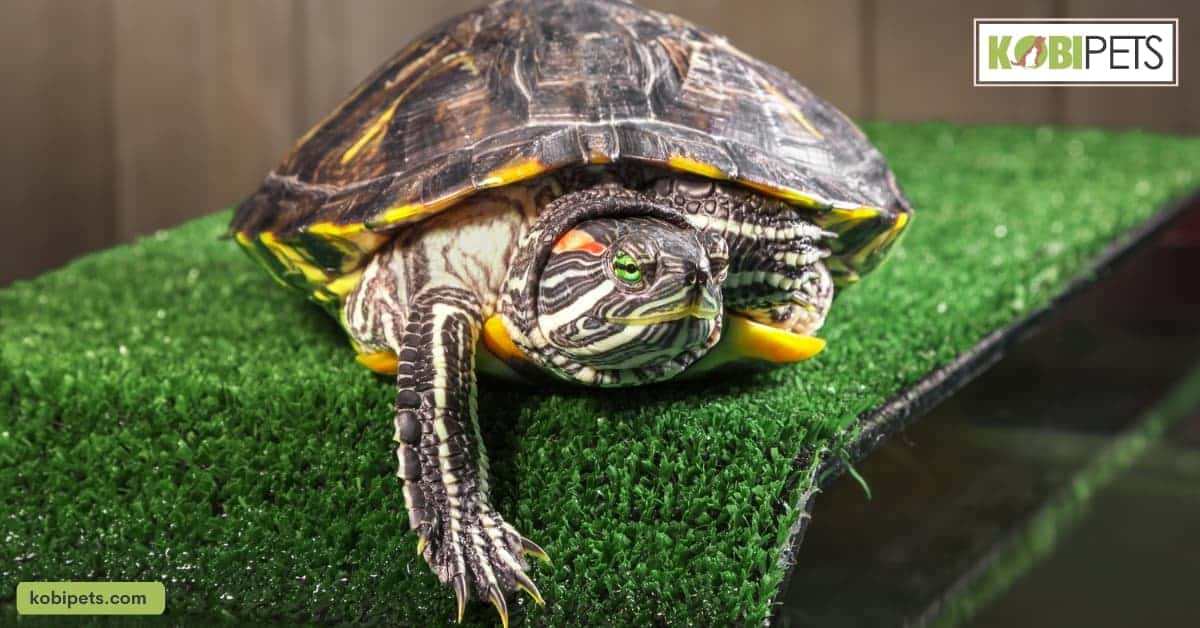
Red-eared slider turtles are omnivorous, meaning they need a balanced diet of both animal and plant material. A healthy diet should include commercially available turtle food such as pellet or flake food, along with freeze-dried shrimp, mealworms, crickets, earthworms, and fruits. Leafy greens like kale, collard greens, or endive are also excellent sources of nutrition for your turtle.
What is a Red-Eared Slider Turtle?
Red-Eared Slider Turtles, also known as red-eared terrapins, are a type of aquatic turtle native to the southern United States. They are easily distinguished by their namesake feature of having a red marking behind each eye.
Red-Eared Sliders can reach up to 12 inches in length and weigh about 2-4 pounds when fully grown. Although they are semi-aquatic creatures, they require access to land in order to bask in the sun each day. Red-Eared Sliders are omnivorous, consisting largely of plants such as vegetation and fruits along with insects, crustaceans, and mollusks as supplemental sources of protein.
It is crucial that owners provide them with ample space to swim and crawl around as well as ensure their tank is kept clean in order for them to live long healthy lives.
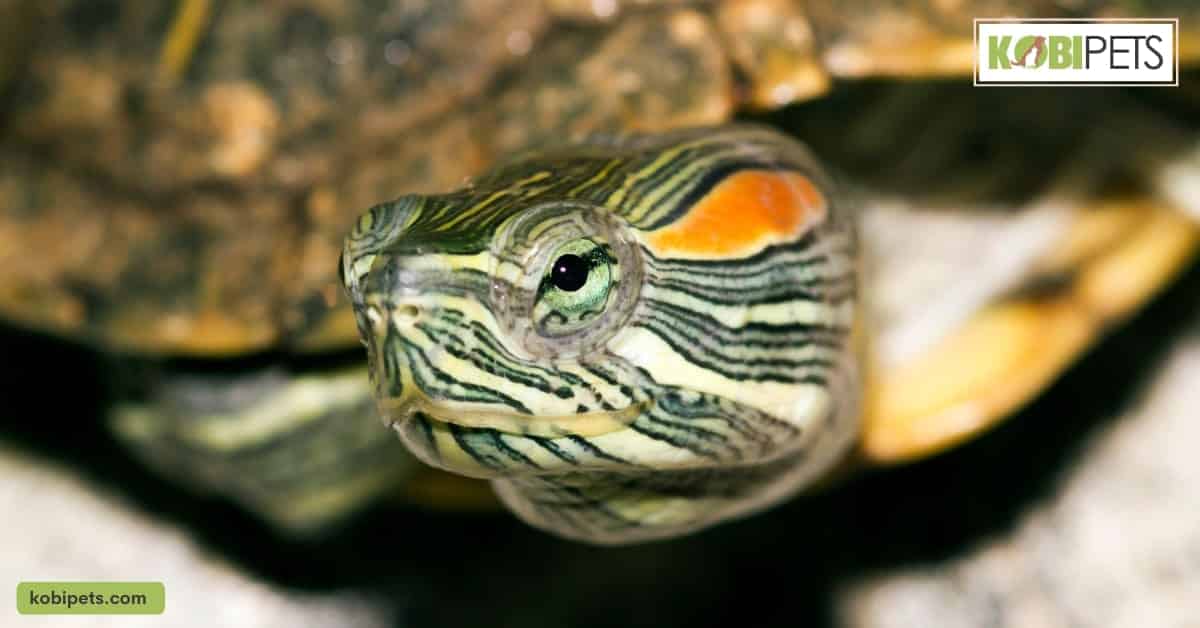
What Types of Foods Can I Feed My Red-Eared Slider Turtle?
Red-Eared Slider Turtles require a balanced diet that contains both animal and plant materials to ensure their health and well-being. A variety of commercially available turtle foods, such as pellets or flakes, along with freeze-dried shrimp, mealworms, crickets, earthworms, and fruits are all excellent sources of nutrition for your turtle.
Commercial turtle food such as pellets and flakes
Commercial turtle food such as pellets and flakes can be a great source of nutrition for your pet turtle. These foods are designed with the various nutritional needs of turtles in mind, especially those that are found in the wild.
Depending on the type of turtle you have, these Foods can provide a healthy diet while also likely satisfying its natural needs. As with any other type of pet food, however, it is important to be aware of varying quality levels and choose the most balanced option you can find.
Additionally, consider supplementing your turtle’s meals with fresh fruits and vegetables if possible, multiple times per week. Doing so may help provide additional beneficial dietary elements to keep them both healthy and happy.
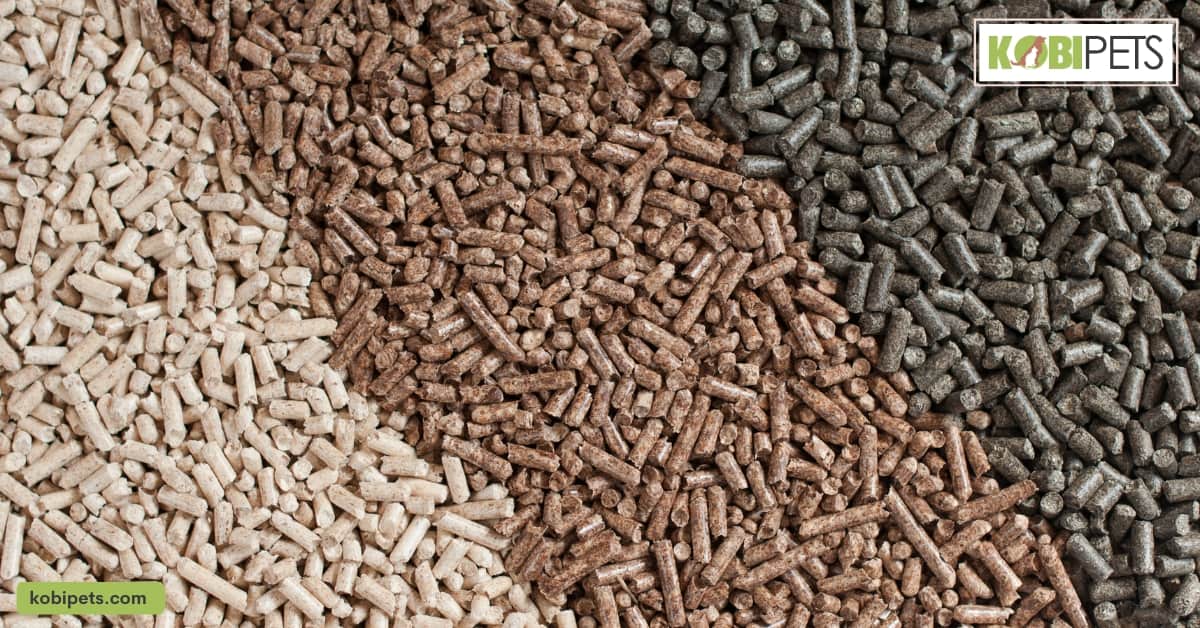
Freeze-dried shrimp, mealworms, and crickets
Red-eared slider turtles are omnivores and require a healthy diet to keep them happy and healthy. Freeze-dried shrimp, mealworms, and crickets can make up part of their dietary needs. Not only are these food sources highly palatable for your pet, but they also provide an excellent source of protein.
Freeze-dried formulas are especially convenient since there is no need to refrigerate or freeze the food. Mealworms and crickets offer plenty of variation in your turtle’s diet, as well as providing essential vitamins and minerals to give them added energy.
These types of foods should make up no more than 10-20% of your turtle’s overall diet. However, it is essential that you also feed them proteins from the plant material and other sources.
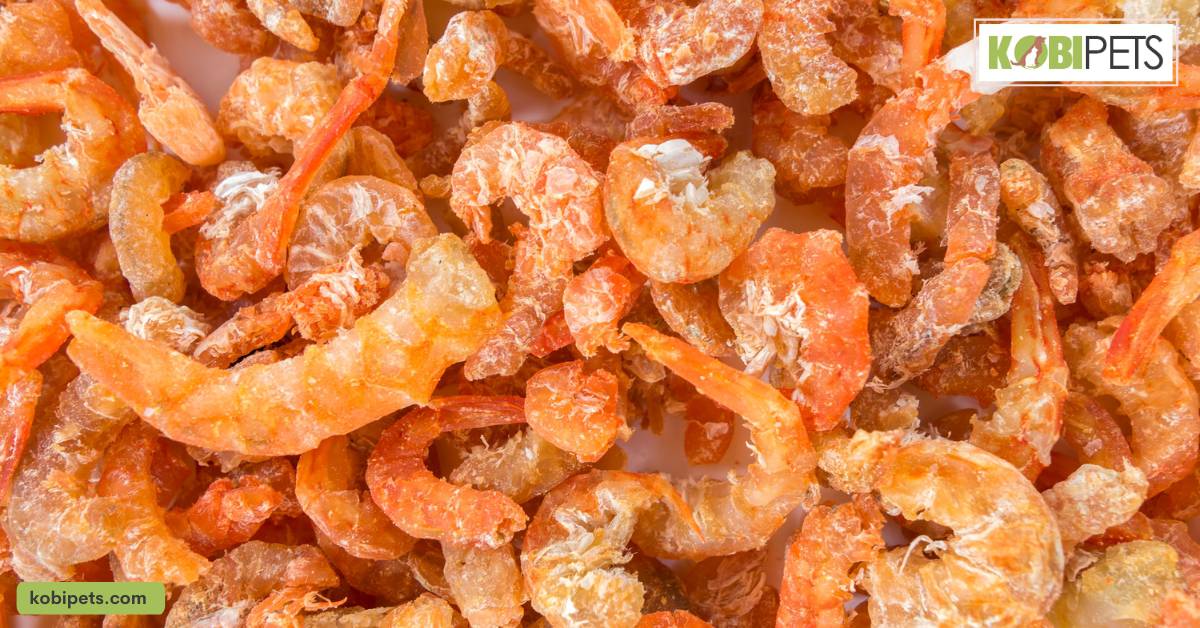
Earthworms
One type of food that is well known for being favored by turtles is earthworms! Live earthworms are readily available in the wild and can be used as a snack for your turtle. Freeze-dried worms, on the other hand, should not be offered more often than once per week to avoid digestive upset.
Thankfully, additional sources of protein such as crickets and mealworms work quite well as replacements. Finally, it’s important to note that although your turtle may be tempted by fish from the wild or from a nearby pond, these should be avoided at all costs – improper nutrition from wild-caught fish can lead to significant health issues down the road for your reptile companion.
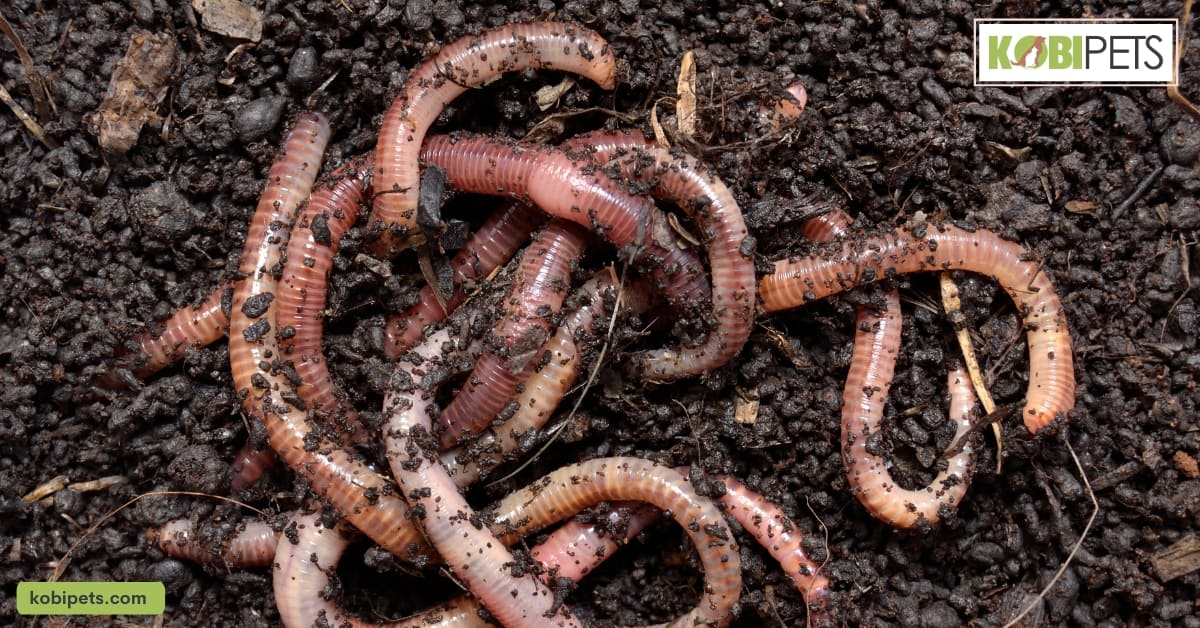
Fruits like apples, pears, melons, strawberries, and blueberries
When it comes to what types of foods you can feed your red-eared slider turtle, the possibilities are almost endless. While turtles require a balanced diet that mainly consists of products such as fruits like apples, pears, melons, strawberries, and blueberries, they also enjoy proteins such as small fish and worms.
Leafy green vegetables like spinach and kale should make up the majority of their meals. Reptile pellets are also beneficial in order to provide vitamins and minerals. Be sure to chop or mash fruits and vegetables into smaller pieces so that they can easily eat them; soft fruits like grapes should also be cut in half before feeding.
However, remember to give your turtles variety by rotating the types of food you feed them on a regular basis.
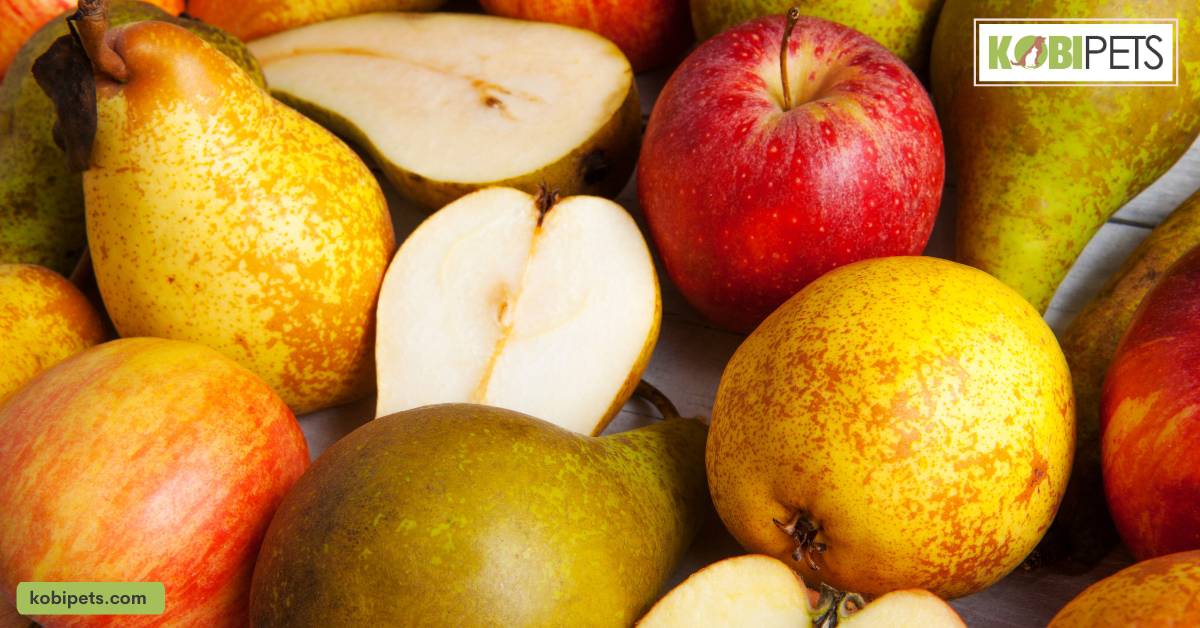
Leafy greens such as kale, collard greens, or endive
Red-Eared Slider turtles are omnivores and can enjoy a wide variety of food items. Leafy greens such as kale, collard greens, and endive are particularly good for them, providing important vitamins and minerals necessary for their overall health.
Feeding the turtle these leafy greens will benefit its shell structure, promote proper growth and keep your pet in top form. However, feeding too much greenery is not recommended since it could cause indigestion or malnutrition problems if they do not get the right balance in their diets; limit leafy green vegetables to no more than 10-15% of total weekly feedings.
Be sure to remove any uneaten leftovers a few hours after feeding your turtle.
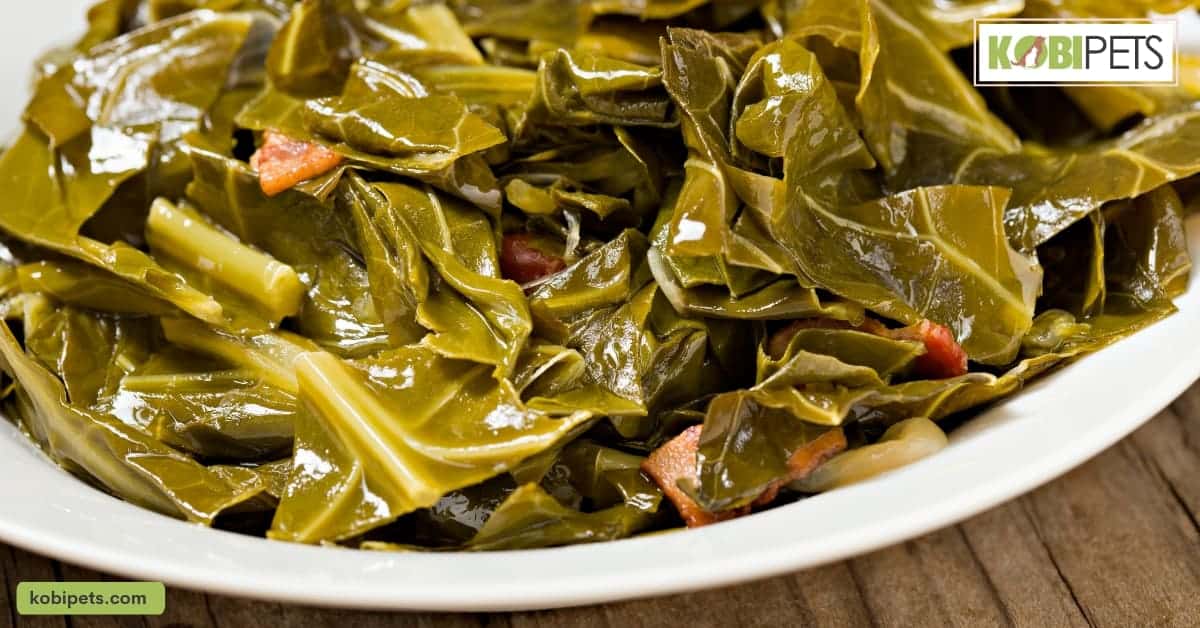
Insects and crustaceans
Red-eared slider turtles have a varied diet that should be composed of both plants and animals to ensure proper nutrition. Insects and crustaceans are common foods fed to these omnivorous pets.
Vegetables such as leafy greens, squash, and beans can also be given fresh or frozen. For protein, feed them worms and pupae from darkling beetles, crickets, cockroaches, snails, and slugs. In addition, to live foods, you may also offer reptile sticks or pellets as well as freeze-dried insects like mealworms for additional enrichment and snacks.
While some people opt for regular feeder fish from pet stores like guppies and minnows, it isn’t recommended since they may contain parasites that could harm your turtle’s health over time.
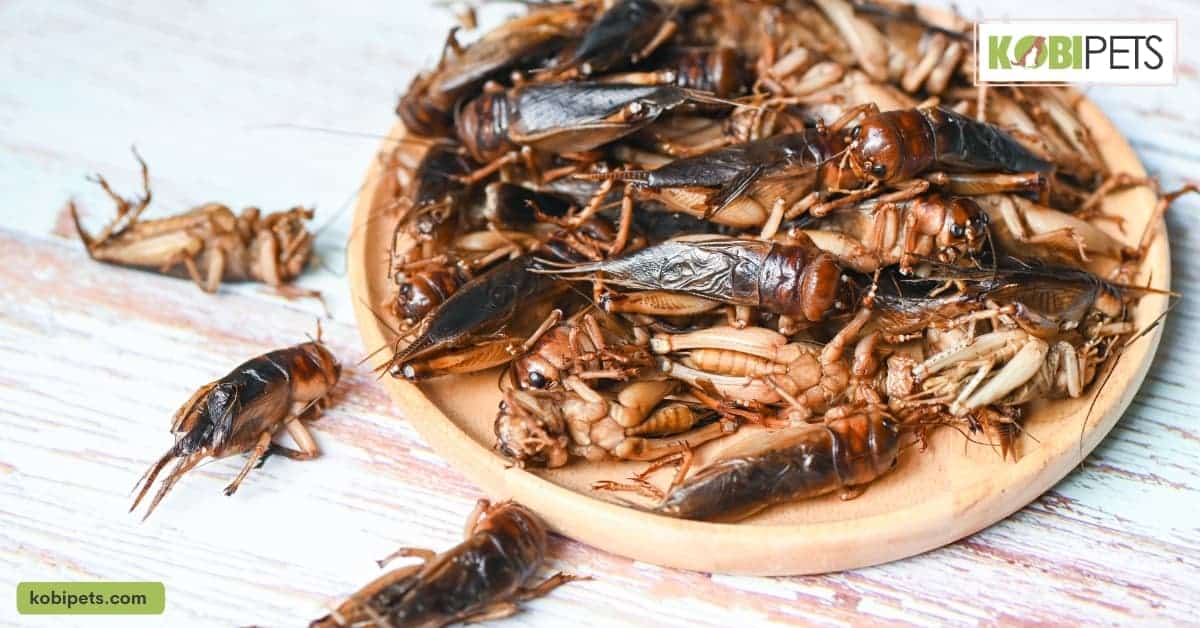
Mollusks like snails and clams
Feeding a red-eared slider turtle can be both enjoyable and educational. Mollusks such as snails and clams make excellent snacks for this type of turtle. Not only do they provide them with vital nutrients, but they also help to keep their beaks trimmed! Freshwater mussels, snails, crayfish, and even pieces of squid can all be offered occasionally to your red-eared slider.
However, it is important to note that these mollusks should always be carefully cleaned prior to handling or feeding the turtle. Furthermore, while mollusks may make up only a small part of your turtle’s diet, they still have the potential to introduce diseases into your tank if not thoroughly washed first.
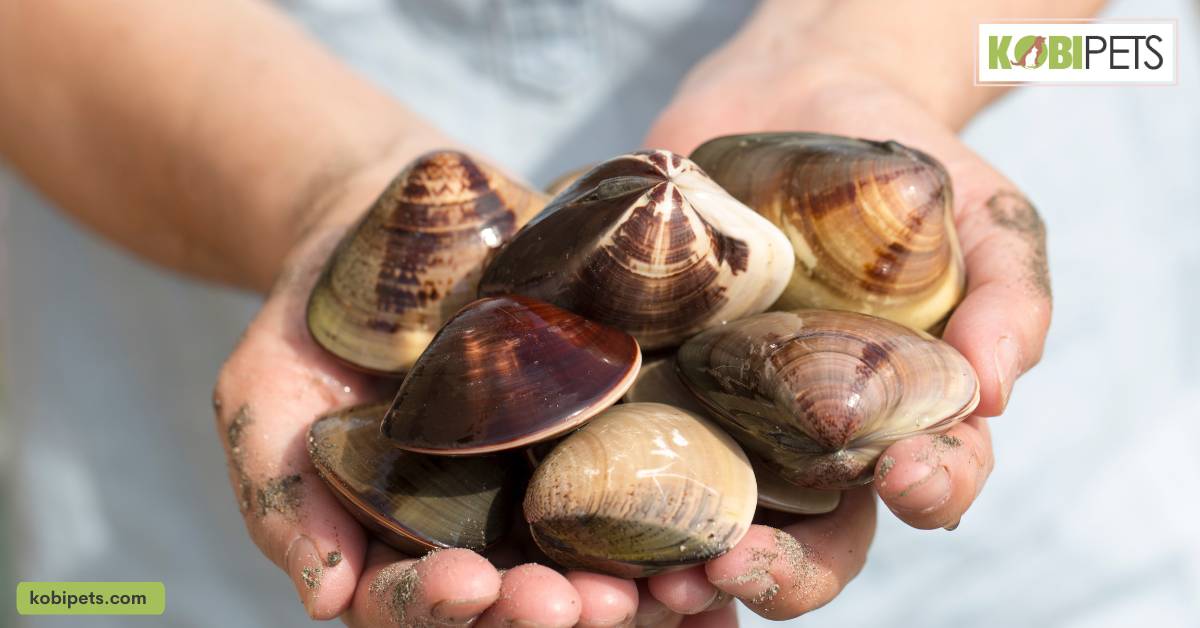
Vegetables such as squash, carrots, broccoli, and sweet potato
Generally, a red-eared slider turtle diet should consist of a variety of foods. While they need some protein sources such as insects and worms, they also benefit from an array of vegetables including squash, carrots, broccoli, and sweet potato.
Because the nutritional value of vegetables can vary greatly depending on where they are grown or purchased, be sure to choose organic produce whenever possible. Additionally, it is important to add these types of vegetables in moderation so their diet doesn’t become too one-sided with too many carbohydrates.
Many turtles will enjoy crunchy veggies like kale by themselves but even better when combined with other ingredients like diced apples or cooked fish to make a unique mixture for them to munch on.
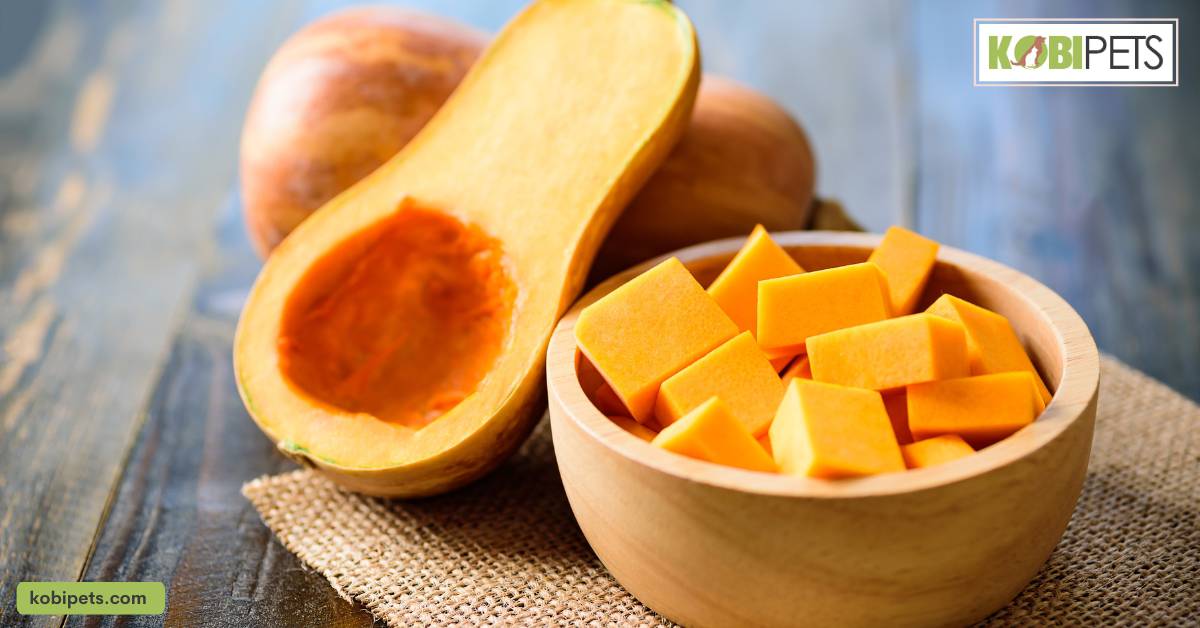
How Much Should I Feed My Turtle?
Turtles need an appropriate diet to stay healthy and happy. While it may be difficult to determine exactly how much you should offer, the general rule of thumb is to feed them as much as they can consume in 15 minutes. To ensure a balanced diet, use a variety of food.
For example, feed your turtle a mixture of fresh and frozen marine life (silverfish, earthworms, prawns), commercial pellets, floating or sinking aquatic turtle sticks, dark leafy greens, and occasional veggies. It’s also important to factor in your turtle size, age, and activity level when considering portion sizes and an overall number of meals.
Finally, always keep an eye on your turtle’s health; if it appears overweight consider reducing the portion size or frequency of feedings while still providing a balanced diet.
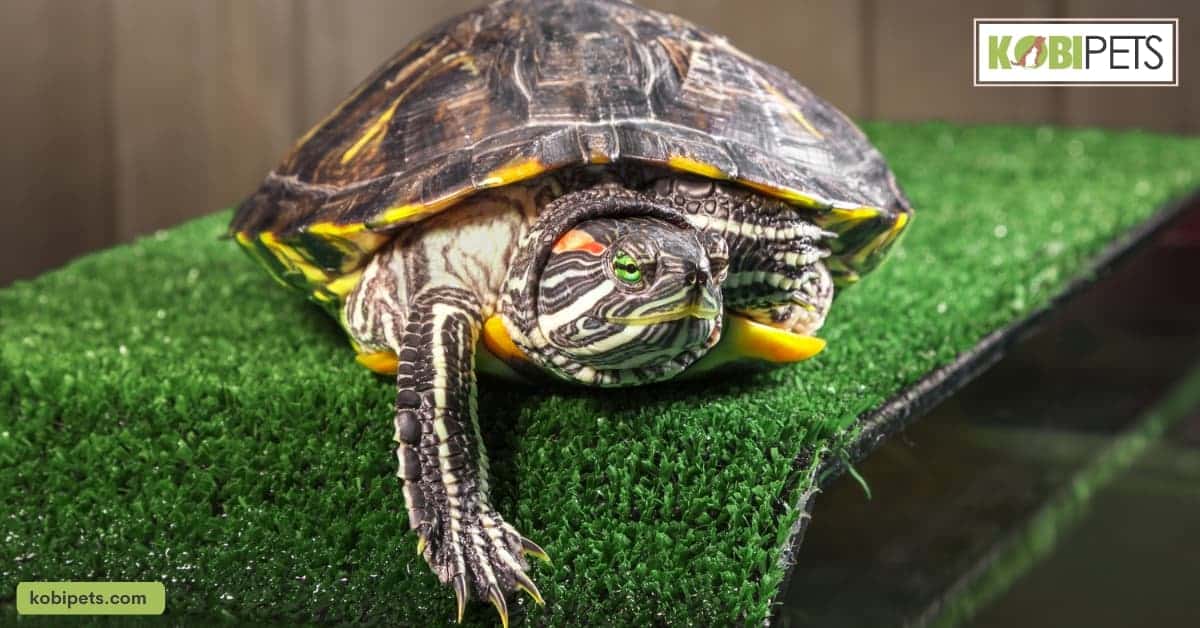
Baby Red-Eared Feeding Schedule
Keeping a baby red-eared slider fed and healthy is important for its growth and development. Since this type of turtle is a carnivore, it should be fed at least three times per week. A diet consisting of turtle pellets, live insects, and other animal proteins, such as feeder fish, snails, and crickets is necessary to ensure they get the nutrition they need.
If merely fed turtle pellets alone, it’s important to supplement these with multivitamins that are made specifically for reptiles so they don’t end up deficient in any essential nutrients. Supplementing their diet with fresh vegetables provides extra fiber that can better aid in digestion as well as add variety to their meals.
As these turtles grow, the frequency of feeding increases; juveniles should be fed daily while adult red-eared sliders may need to be fed three to five times per week for optimal health.
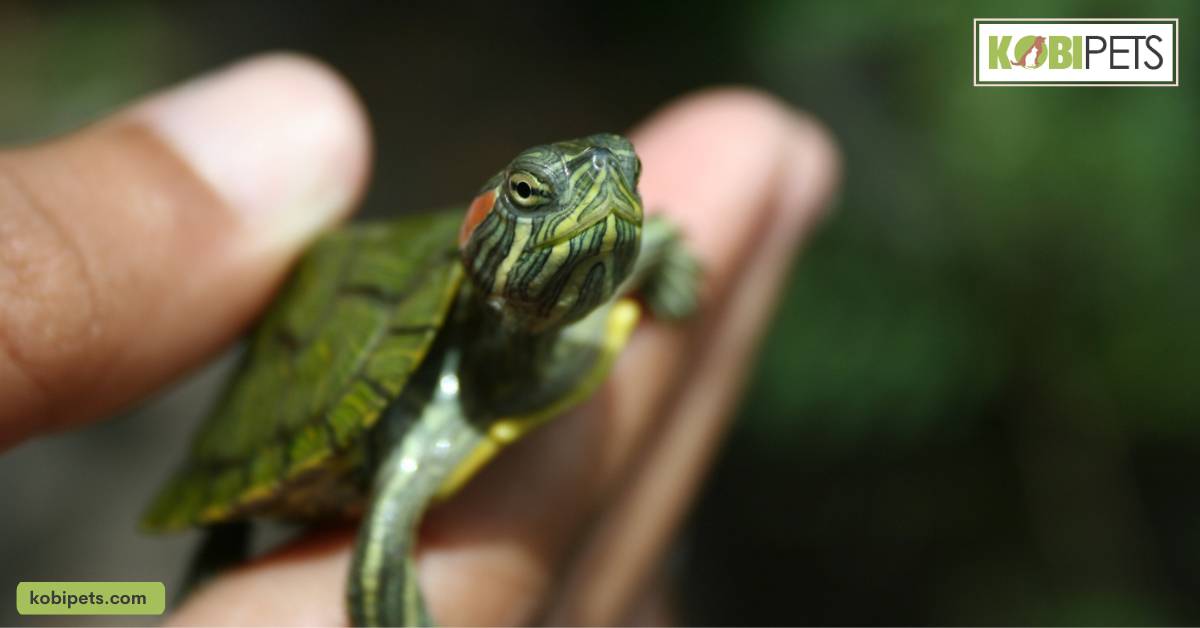
Adult Red-Eared Slider Turtle Feeding Schedule
Adult turtles should typically be fed two or three times a week; however, the size of the food portion should depend on the individual turtle’s size. To ensure optimal health, it is important to feed a variety of foods that provide all essential nutrients.
A good mix might include minced meat, earthworms, freeze-dried shrimps, bloodworms, crickets, and small guppies as well as leafy greens like romaine lettuce and turnip greens plus small amounts of aquatic vegetation daily. Additionally, treats such as fruits, cat food, boiled eggs, and commercial turtle diets should not exceed more than 10-15% of the daily intake.
Finally, make sure to monitor your turtle while eating; any uneaten food should be removed since it can lead to water quality issues. With careful monitoring and regular diet adjustments based on activity level and stress factors, one can maintain healthy pet red-eared sliders for many years.
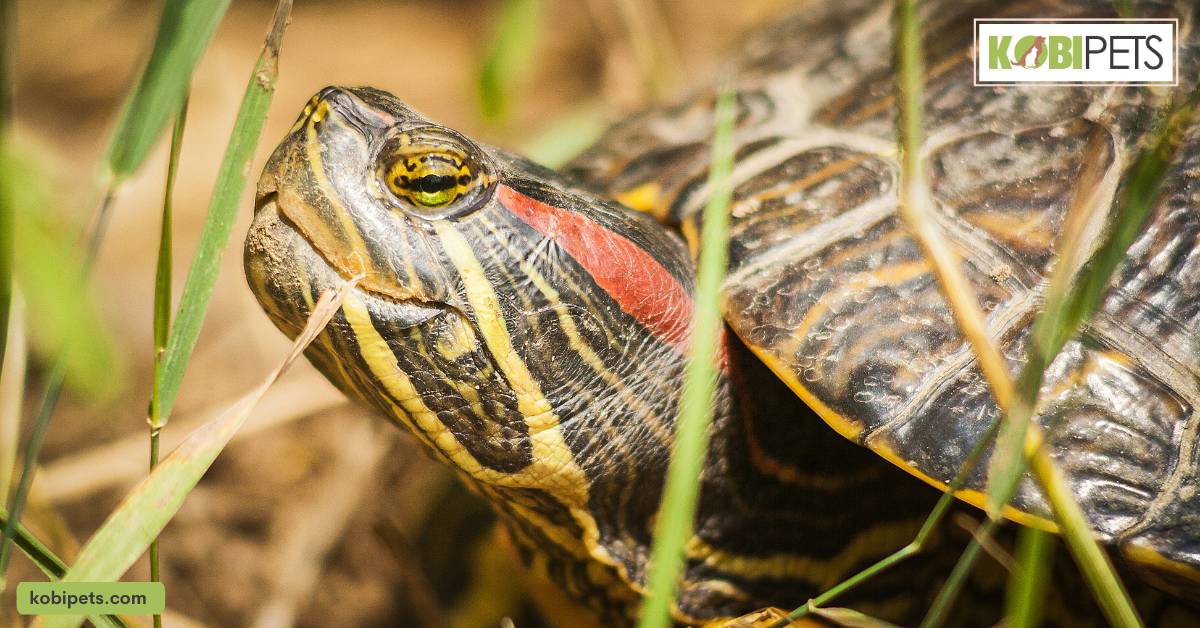
Common Feeding Mistakes When Feeding a Red-Eared Slider Turtle
Feeding your Red-Eared Slider turtle the wrong diet or incorrectly can lead to serious health problems. To ensure that your pet reptile remains healthy, it is important to be aware of some of the most common feeding mistakes when feeding a red-eared slider turtle.
From offering too much protein to providing food that is too large for the turtle to eat, this article will help educate owners on the proper way to care for their pets. By avoiding these feeding mistakes and feeding an appropriate diet, you can ensure your red-eared slider remains healthy and happy.
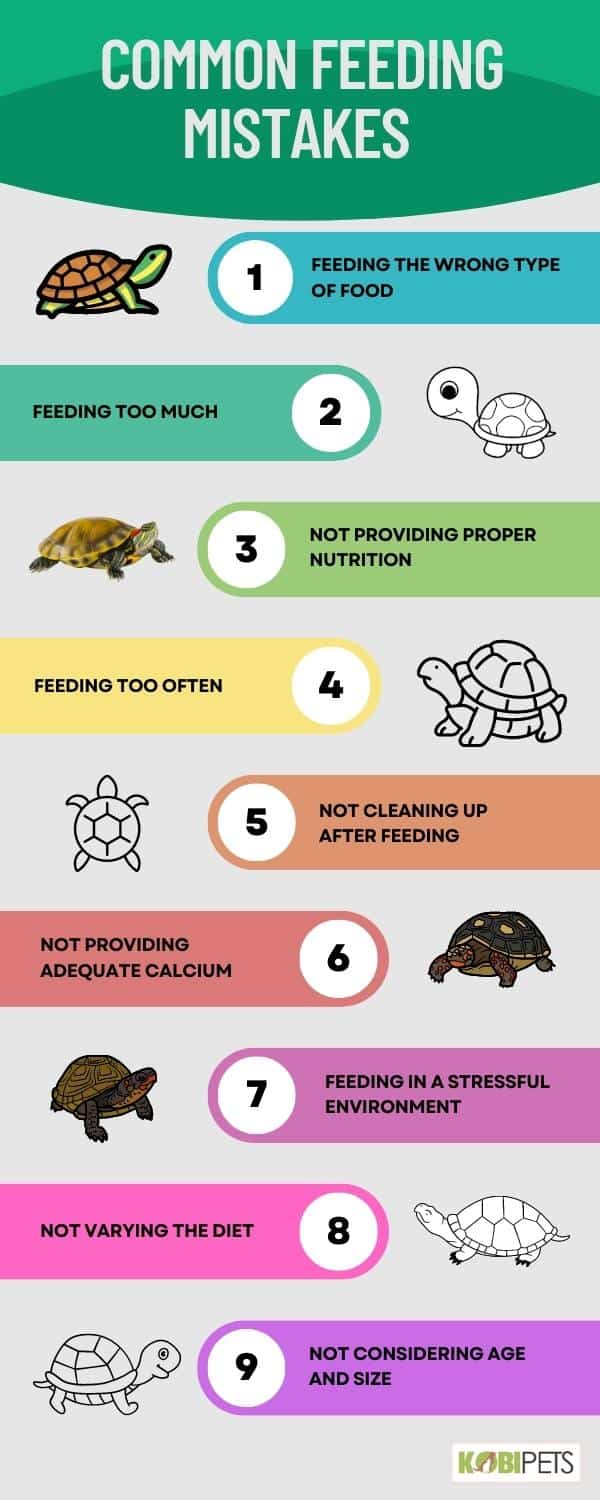
Common Feeding Mistakes When Feeding a Red-Eared Slider Turtle
1. Feeding the wrong type of food
Red-eared sliders should mainly eat animal protein sources such as insects, crustaceans, and worms as well as leafy green vegetables supplemented with calcium for optimal health. Avoid overfeeding processed turtles with foods like pellets or sticks, fish from the wild, or high-fat meats like beef.
2. Feeding too much
Overfeeding your turtle can lead to obesity, which can in turn cause various health issues such as shell deformities and metabolic bone disease. Offer only what your turtle can consume within a fifteen-minute time frame and remove any uneaten food after that period has elapsed.
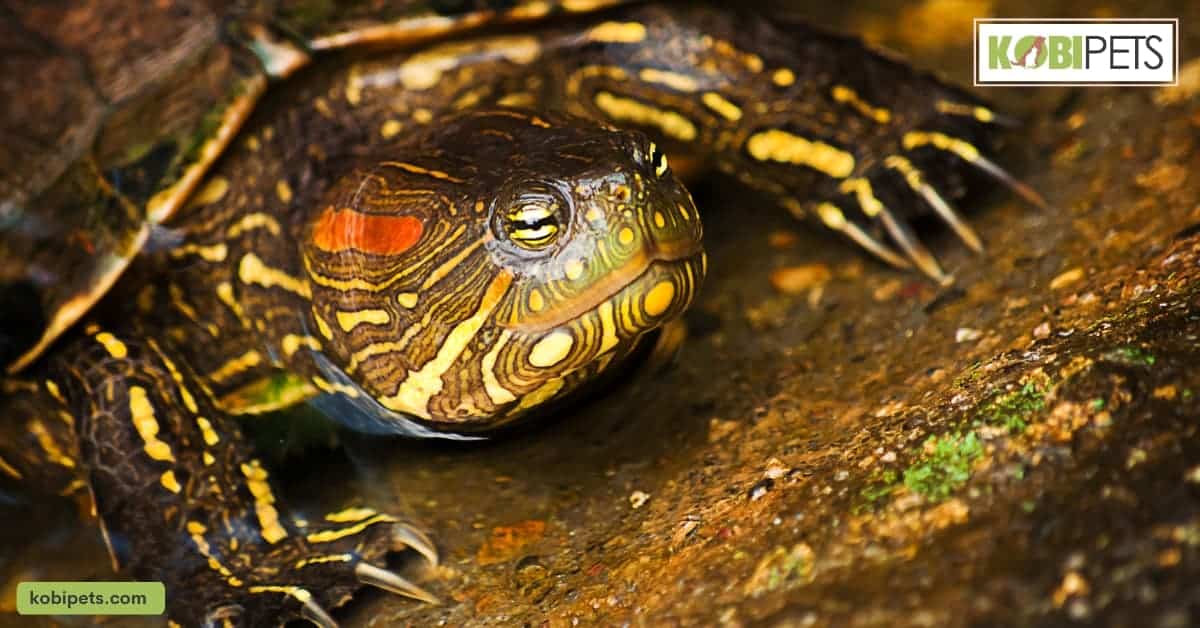
3. Not providing proper nutrition
Turtles need a balanced diet that includes both animal and plant materials to ensure their health and well-being. Offer your turtle a variety of foods rich in protein, calcium, vitamins A and D, as well as essential fatty acids.
4. Feeding too often
Too much food can lead to intestinal blockages or other digestive issues. Feed your turtle every two to three days and adjust the frequency of feedings depending on its size, weight, and activity level.
5. Not cleaning up after feeding
It is important to remove any uneaten food from the enclosure immediately after feeding as it can contaminate the water and lead to bacteria growth that can harm your turtle.
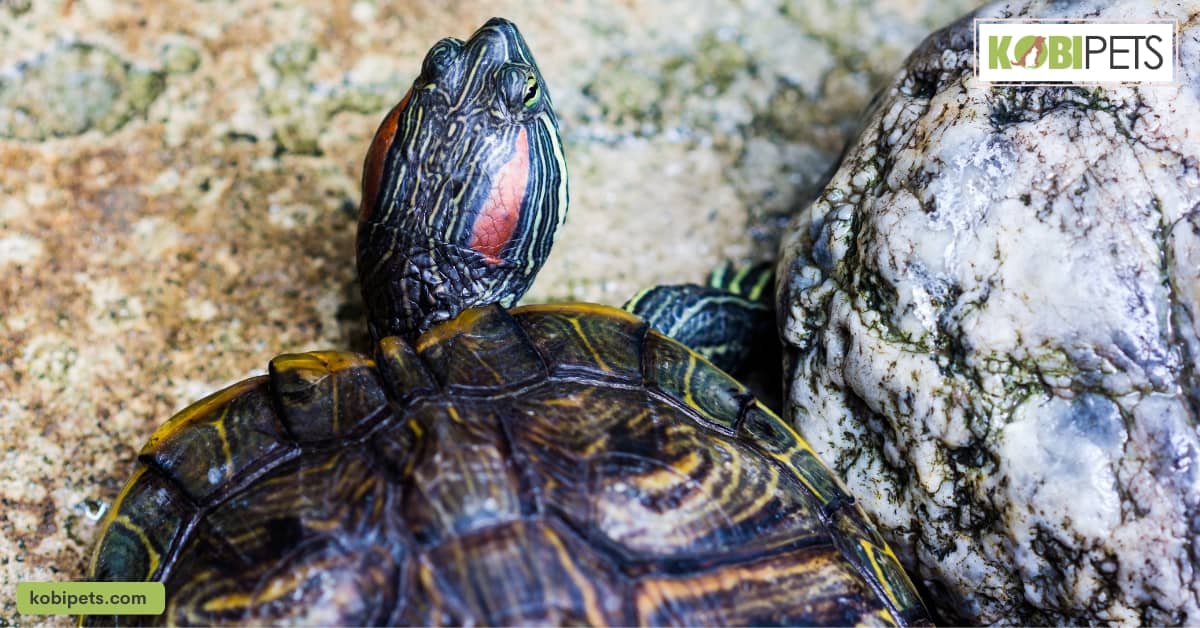
6. Not providing adequate calcium
Calcium is essential for proper shell growth, bone development, and overall health of red-eared slider turtles. You can supplement their diet with calcium powder or multivitamins that are formulated specifically to meet the needs of reptiles.
7. Feeding in a stressful environment
Turtles tend to be more stressed when fed in a chaotic or loud environment. To ensure they properly digest their food, feed them in a quiet and peaceful area away from other animals or people.
8. Not varying the diet
Turtles need variety in their diets and should have access to different types of foods on a regular basis. Rotate their meals with various proteins, vegetables, and fruits to ensure they receive the necessary essential nutrients.
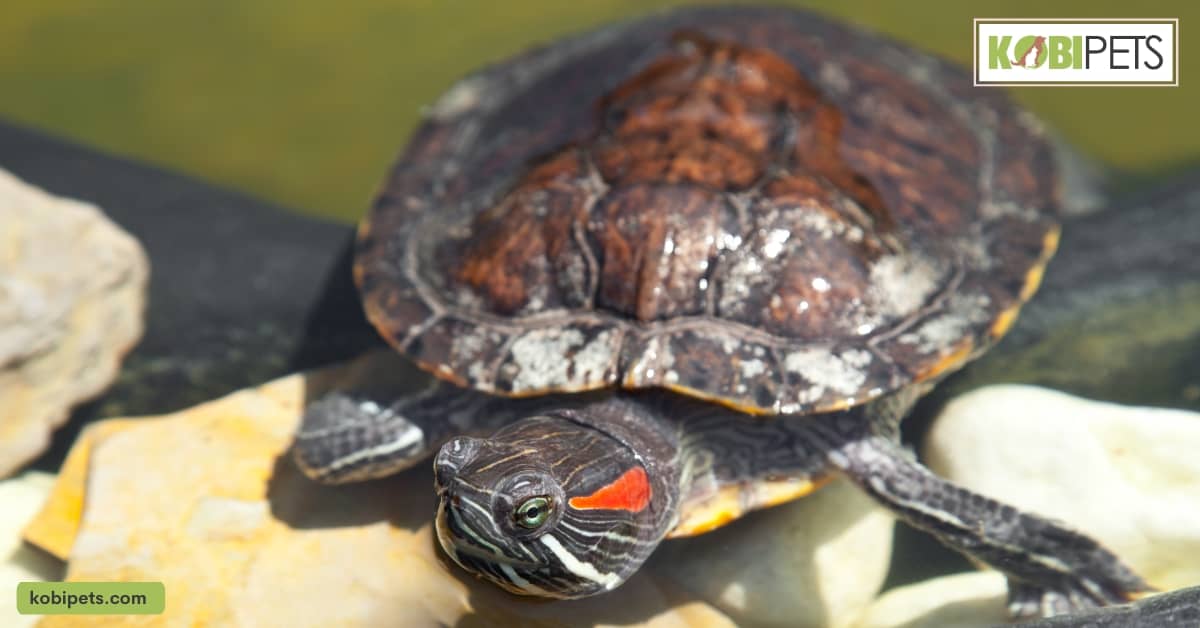
9. Not considering age and size
The types of food, portion sizes, and frequency of feedings should be adjusted according to the turtle’s age and size. Baby turtles need to eat more frequently than adults while juveniles typically need to be fed daily.
Foods That Red-Eared Slider Turtle Cannot Eat
Red-eared slider turtles are omnivores, meaning they eat both plants and animals. They can consume a variety of food items such as fruits, vegetables, insects, mollusks, and fish. However, there are certain foods that should be avoided altogether due to their potential to cause harm to the turtle.
Here are just some of the foods that Your Red-Eared Slider Turtle cannot eat:
- Canned vegetables or fruits
- Processed meats such as sausage, bacon, and ham
- Table scraps
- Animal fat
- Wild-caught fish (due to potential parasites)
- Dairy products like milk and cheese
- Sugary foods like candy or ice cream
- Avocado
- Rhubarb
- Nuts and seeds (due to high-fat content)
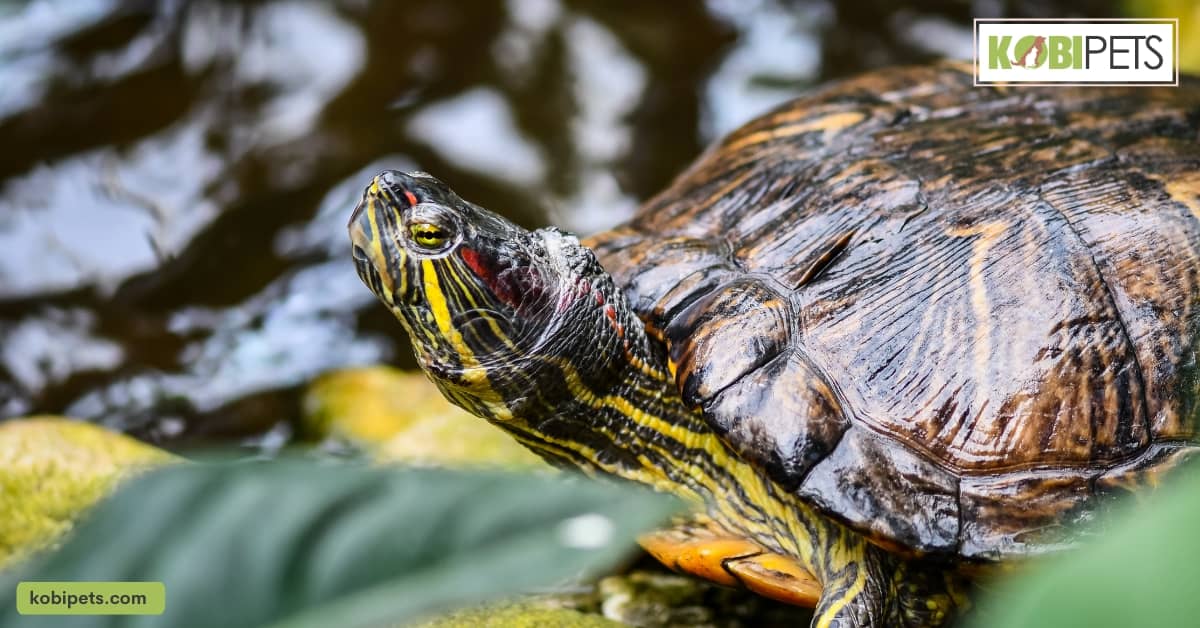
In Conclusion
Overall, red-eared sliders are easy pets to care for if they are provided the proper nutrition. A diet consisting of both animal and plant materials ensures that your turtle gets all the essential nutrients it needs to stay healthy and happy.
Be sure to provide variety in their meals, adjust portions according to size and age, and avoid feeding them foods that may cause harm. With the right diet and proper care, you can ensure your red-eared slider will remain in optimal shape for years to come!






